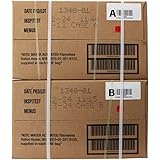Understanding the Importance of Emergency Communication
Why It Matters
When emergencies strike, communication can literally be a lifesaver. Personally, I’ve witnessed the chaos that unfolds without a strong communication plan. Picture this: a natural disaster hits your area, power goes out, and your regular channels of communication are down. This scenario highlights why having an emergency communication system in place is crucial.
Effective communication during emergencies ensures you can relay information quickly and accurately, helping to keep people safe and informed. That’s where well-structured emergency communication systems come into play. They’re not just tools; they’re lifelines during critical moments.
From my experience, many underestimate the necessity of such systems until they face a crisis. Trust me; it’s better to be prepared and never need it than to find yourself scrambling in a worst-case scenario.
Types of Emergencies
Understanding the types of emergencies you might face is fundamental. These can range from natural disasters like hurricanes or floods to man-made crises, such as chemical spills or active shooter situations. Each type of emergency requires different communication strategies.
Personally, I’ve found that being aware of potential emergencies in your area can help you tailor your communication plans accordingly. For instance, if you live in a flood-prone area, knowing how to use weather radios and mobile apps effectively can make a huge difference.
So, before diving into the systems themselves, take a moment to assess the landscape of risks in your community. It’ll save you a lot of headaches later!
Key Components of Communication Systems
When building out an emergency communication system, there are a few key components to consider: redundancy, flexibility, and accessibility. Redundancy means having multiple ways to communicate, like combining text alerts with social media updates and local radio broadcasts.
I remember during a minor earthquake in my area, cell networks were jammed, but I was able to get information through local radio. It’s all about ensuring that if one channel fails, others remains operational!
== > What if ... Get a FREE Subscription to PREPARE
Flexibility is also important; your system should work for all users including those with disabilities. Make sure your plans include multiple formats, from written messages to visual signals.
Establishing Communication Protocols
Designing a Communication Plan
Creating a communication plan is like mapping out your journey before hitting the road. It allows you to streamline your efforts and tackle potential problems head-on. Start by determining who the key players are: emergency services, community leaders, and neighbors.
When I drafted my own plan, I included clear protocols on how information would be conveyed during emergencies. This included designated roles for individuals—who’ll be the point of contact? Who will handle updates on social media? These details matter!
Having a designated plan can help minimize confusion, especially when things turn chaotic. Remember, the clearer your plan, the less room for panic.
Choosing the Right Channels
There’s an abundance of channels available today, from text messaging to social media platforms. Personally, I’ve found that a combination works best. In my experience, SMS alerts have been the most immediate and reliable option for reaching out quickly.
Social media can amplify your message to a broader audience, but it’s essential to verify information before posting. During emergencies, misinformation spreads like wildfire, and it can create unnecessary chaos.
So, outline which channels you will use and ensure everyone involved is aware of them. Consistency is key in maintaining clarity among your audience.
Training and Drills
Once you have your plan in place, don’t forget the training phase. This is where many people drop the ball. Just having a plan isn’t enough; practicing it ensures everyone knows what to do under pressure.
In my own experience, we conducted regular drills that not only prepared us but also identified areas that needed improvement. Don’t shy away from role-playing scenarios and tweaking your plan based on those experiences. Trust me; it’s eye-opening.
Sharing periodic updates and training sessions with your whole community can help reinforce the importance of the plan and foster a culture of preparedness.
Implementing Technology Solutions
Utilizing Modern Technology
Technology is a game-changer when it comes to emergency communication systems. Nowadays, apps and automated services can streamline the process of sending alerts or updates. Personally, I’ve explored several emergency communication apps that allow alerts to be sent to designated contacts at the push of a button.
These tech solutions can save crucial time during crises. The key is to choose a solution that’s user-friendly and accessible for the entire community. After all, ease of use is vital during stressful times.
However, always remember that technology can fail. That’s why combining modern solutions with traditional methods, like loudspeakers or community meetings, can ensure all bases are covered.
Get Preparedness and Self-Reliance Tips. Subscribe Now!
Integrating Social Media
Social media platforms can play a massive role in spreading awareness during emergencies. I’ve seen firsthand how quickly news travels on platforms like Twitter and Facebook. Keep your community informed by setting up dedicated pages to relay timely information.
But, as I mentioned earlier, it’s essential to verify what’s shared. During an emergency, false information can spread just as rapidly. It’s worth having a dedicated team to monitor communications and ensure accuracy.
Engaging the community on these platforms can also foster a sense of unity while providing a space for people to share real-time experiences during crises.
Feedback and Improvement
After any emergency event, take the time to gather feedback on how your communication system functioned. I’ve found this to be incredibly insightful. It’s your chance to learn what worked, what didn’t, and what can be improved.
Set up surveys or informal discussions where people can voice their thoughts. Were there any gaps in communication? Did people feel well-informed? These discussions can shape your future preparedness efforts.
Continuous improvement is essential in the realm of emergency communication. By regularly updating and refining your systems, you’ll be better prepared for whatever comes next.
Engaging the Community
Building Trust and Awareness
One of the most essential aspects of an effective emergency communication system is community engagement. By involving your community in your planning efforts, you build trust and increase awareness. I’ve seen how working together with neighbors not only strengthens ties but also emphasizes the seriousness of emergency preparedness.
Host community events where topics around emergency communication are discussed. These events can also serve as an excellent platform for education. The more people know, the more prepared they will be!
Trust me, creating a culture of preparedness leads to a community that can better support each other during difficult times.
Creating Informed Citizens
In my experience, informative campaigns can empower citizens. Your community members should know exactly what steps to take during emergencies and have access to the resources available to them.
From distributing pamphlets detailing emergency contacts to promoting online resources, there are various ways to keep everyone informed. Get creative with it! Think about fun ways to share information that resonates with your neighbors.
The goal is to ensure everyone is on the same page when disaster strikes.
Organizing Community Drills
Don’t underestimate the power of practice! Organizing community drills can significantly raise awareness and readiness. By simulating an emergency scenario, you can prepare everyone for real situations.
In planning these drills, involve local emergency services. Their expertise can add immense value, and it’s a great excuse to foster relationships between the community and these vital organizations.
Through these drills, you’ll not only enhance individual readiness but also strengthen community bonds, making everyone feel safer.
Conclusion
In conclusion, establishing a robust emergency communication system is foundational for any community or organization. By understanding the importance of communication, crafting clear protocols, leveraging technology, and engaging the community, you set the stage for safety and preparedness.
Frequently Asked Questions
1. Why is emergency communication necessary?
Emergency communication is essential because it ensures timely and accurate information is shared during crises, which can save lives and minimize chaos.
2. How do I create a communication plan for my community?
Start by identifying key players, deciding on the right communication channels, and outlining clear roles and responsibilities. Don’t forget to practice the plan!
3. What technology can enhance emergency communication systems?
Smartphones, apps that send alerts, and social media platforms can enhance communication. Ensure that your technology is user-friendly and reliable.
4. How can I engage my community in emergency preparedness?
Host events, distribute informative materials, and organize drills to foster engagement and increase awareness. Involvement builds trust and preparedness!
5. What should I do after an emergency event?
Gather feedback from the community, review what worked and what didn’t, and continuously improve your emergency communication plans to better prepare for future events.






